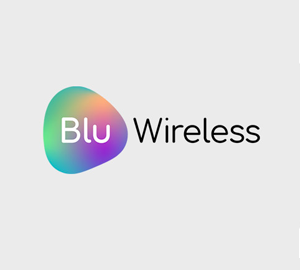2019 has been the year of exponential connectivity growth and technology breakthroughs for Blu Wireless. We’ve seen the growth of HealthTech and its power to combat loneliness in the elderly population. We’ve seen commercial partnerships which will pave the way for a technology shift in the high speed transport industry. We’ve seen billions invested into the global autonomous vehicle market, which promises to revolutionise road safety and even . And we’ve seen the growth of Industry 4.0 which will take productivity and efficiency in factories to new heights.
Without doubt, technology providers are innovating to meet current connectivity demands and anticipate future ones. Innovation is not only spreading across sectors but being driven forward by new Here are our four key trends in 5G connectivity and how we see these developing in the coming year:
Connectivity growth has been outstanding
It is estimated that internet users are still growing rapidly, with over one million new users coming online every day and increasingly more people using internet on the move. Connectivity development and implementation has been a significant focus in 2019, demonstrated by the fact that there were 26.6 billion connected devices making up the Internet of Things (IoT) network. This number is expected to increase to 75.44 billion by 2025, indicating a 10-fold increase in only ten years. The IoT market is similarly expected to experience a staggering value rise from 212 billion dollars to 1.6 trillion in 2025.
As global usage continues to rise, the demand for cost-effective, reliable and ubiquitous connectivity becomes ever more pressing. 5G mmWave connectivity will play a crucial role in meeting this demand for transport, smart cities, homes and beyond.
Testbeds are at the core of connectivity development
The UK has pledged full-fibre rollout by 2023, and, as such, the country has invested heavily in the development of 5G networks. Applications for rail, health, automotive and more have been implemented in Testbeds throughout cities in the UK, paving the way towards universal connectivity.
Blu Wireless were a key contributor to the AutoAir project which tested 5G technology for application in connected and autonomous vehicles (CAVs). In collaboration with McLaren cars, AutoAir successfully implemented wireless mmWave technologies in various automotive use cases. The European 5G-PICTURE project also came to a conclusion this year and demonstrated 5G-XHaul technology in action on rail.
Smart Cities have also gained focus and investment this year. For example, the government funded the Liverpool healthcare testbed project to implement 5G connectivity for hospitals and residential care workers, to enable the health system to streamline and modernise their operations and combat the digital divide.
Ground-breaking connectivity products are hitting the shelves
The huge expansion of the IoT network, and the resulting data usage and storage, have created a serious need for technological innovation in this area. Without improved connectivity, processing, and backhaul capabilities, our existing networks won’t be able to support our ambitions for smart applications.
More companies are dedicating their research and development to products in the 5G, Wi-Fi, and connectivity realm to drive growth towards a more connected future. Access to reliable, high speed internet that doesn’t require cables, complicated infrastructure, and expensive deployment is on our fingertips. We believe the technology to watch is 5G mmWave small cells.
In the past year small cells have taken over the market and become the primary technology being used to realise Smart Cities, connected and autonomous vehicles, and more. Facebook Connectivity and their partners are making strides in this area. Alongside Blu Wireless they continue to invest in Terragraph with the promise to “solve the urban bandwidth challenge” and provide gigabit wireless technology to cities.
Collaboration has been driving change
From discussions about connectivity standards for CAVs at the Cambridge Wireless automotive and transport SIG event, to applications of 5G mmWave at the HORIBA MIRA conference, one central theme has stood out in 2019 – collaboration.
Telecoms, chipset providers, innovators and software developers have been working together, sharing their technology and insights, in order to action the eagerly anticipated 5G revolution. Our recent ‘Making Waves’ inaugural roundtable event focused on exactly this topic; how different industries, companies, and government bodies can come together to enable the role of licensed exempt mmWave for future connectivity. The industry and all verticals driving this shift in connectivity need to keep collaborating in the new decade to support further progression.
Throughout the year many partnerships have been formed, even between bigger players. Ericsson has partnered with Qualcomm to achieve commercial standalone 5G and together they have been making major strides, Facebook is working in collaboration with several partners to achieve Terragraph’s implementation, and O2 have invested in the Autoair project. The TIP Summit 2019 held in Amsterdam also showed that partnerships are paving the way to the future of connectivity as 12 Community Lab facilities have been opened up worldwide to encourage development in the industry. Bringing together large operators and smaller technology innovators alike is the key element in achieving these goals.
A look ahead to the new decade
The trends we have seen over the course of 2019 have been driven by determination to fully realise the power of 5G. Global connectivity is on its way up and giving no indication of slowing down, with applications ranging from smart factories to real-time emergency service response in smart cities.
On a larger scale, it is inevitable that Smart Cities and universal connectivity will come into play in the coming years. However, consumer demands are a large factor in shaping our connected future, and demands are being made to improve performance of connectivity for homes and transport. This direction is also being reflected by the promises and investments from UK Government. As a result, high-speed transport applications and Fixed Wireless Access are likely to be the leading use cases in 2020.









